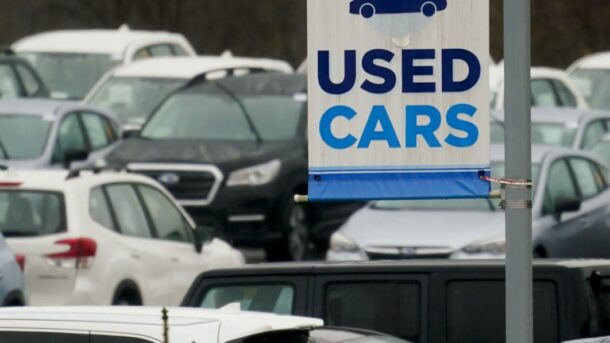In today’s increasingly rational automotive market, used cars have become a popular choice for many due to their high cost-effectiveness. Statistics show that global used car transactions grew by 15% year-on-year in 2023, with China’s market exceeding 20 million units. However, issues like “rebuilt salvage cars” and “odometer rollback” also deter potential buyers. How can you safely find a reliable used car? This guide reveals key strategies for vehicle inspection, channel selection, and price negotiation to help you drive home your dream car!

I. Why Choose a Used Car?
1. Significant Price Advantage
New cars depreciate by up to 20% in the first year, while a 3-year-old used car typically costs just 50%-60% of its original price. For example:
- A Toyota Camry priced at ¥200,000 new sells for ¥100,000–¥120,000 after 3 years.
- Luxury brands depreciate faster: A BMW 5 Series worth ¥500,000 new drops to ¥250,000–¥300,000 in 3 years.
2. Broader Selection
With a ¥100,000 budget, you can only afford new models like the Honda Fit or Nissan Sylphy. For the same price, a used car could be a 3-year-old Honda Accord or even an Audi A4L.
3. Ideal for Beginners
New drivers often face scratches and dents. With a used car, minor damage is less painful, and reselling after 1–2 years minimizes losses.
II. Pitfall Avoidance: 5 Common Traps
1. Rebuilt Salvage Cars
How to spot them:
- Check welds: Factory welds are uniform; aftermarket welds are rough (focus on A/B/C pillars).
- Use a paint thickness gauge: Differences >30% across panels raise red flags.
- Case study: A Hangzhou dealer sold a water-damaged BMW in 2023, costing the buyer ¥120,000.
2. Odometer Rollback
Solutions:
- Check maintenance records (dealerships often log the last odometer reading).
- Inspect pedal/steering wheel wear: A 100,000-km car won’t have “like-new” interiors.
3. Mortgaged/Lien Vehicles
These cars risk repossession! Always verify:
- Whether the vehicle registration certificate (“Green Book”) is mortgaged.
- Use official traffic apps (e.g., China’s Jiao Guan 12123) to check fines/mortgage status.
III. Where to Find Reliable Cars?
1. Certified Pre-Owned (CPO) Programs (Most Hassle-Free)
- Advantage: Manufacturer warranty (e.g., Mercedes CPO offers 1-year extension).
- Recommendations: Audi “Audi Approved”, Toyota “Heartbeat Used Car”.
2. Online Platforms (Transparent Pricing)
- Guazi Used Car: 259-point inspection, 7-day return policy.
- Xianyu: Many private sellers, but verify in person to avoid scams.
3. Physical Markets (Room for Negotiation)
- Pro tip: Visit early morning when dealers are flexible; bring a mechanic for inspection.
IV. Ultimate Inspection Checklist
1. Static Checks
- Engine bay: Look for tool marks on bolts (signs of repairs).
- Trunk: Lift the mat to check for rust (flood-damage indicator).
- Test all functions: Sunroof, windows, A/C, etc.
2. Dynamic Tests
- Road test: Check for pulling at 60+ km/h (suspension issues).
- Listen for noises: Grinding sounds during hard acceleration.
3. Essential Documents
- License, registration (“Green Book”), maintenance records, accident history (use apps like Che300).
V. Bargaining Tactic
- Negotiate with flaws: Point out tire wear/paint scratches.
- Month-end deals: Dealers offer discounts to meet quotas.
- Cash payment leverage: Ask, “How much lower for cash today?”
Conclusion
A used car isn’t “cheap” – it’s a smart choice for value seekers. By mastering these inspection techniques and avoiding salvage/mortgaged cars, you can enjoy 90% of a new car’s experience at half the price.



